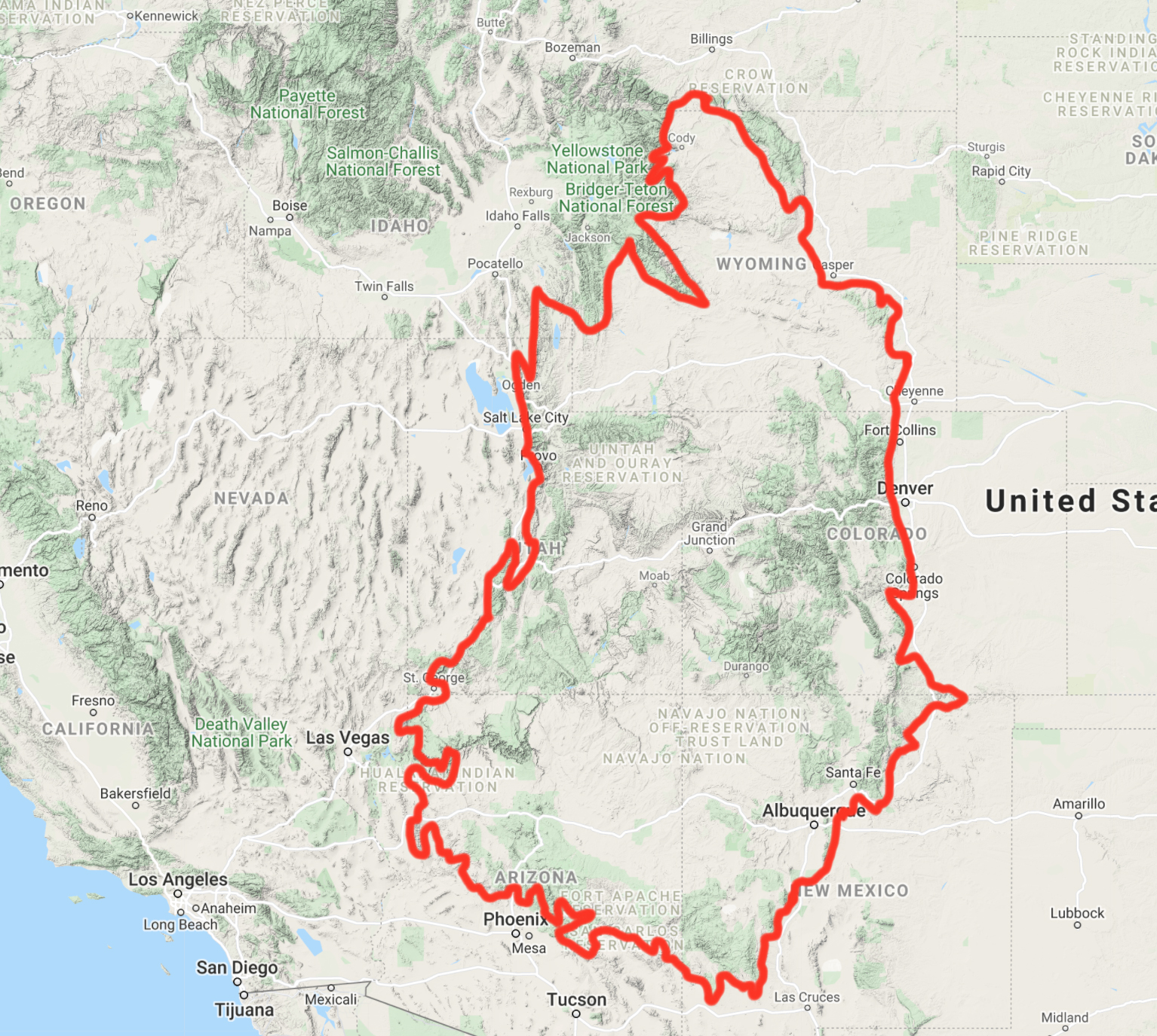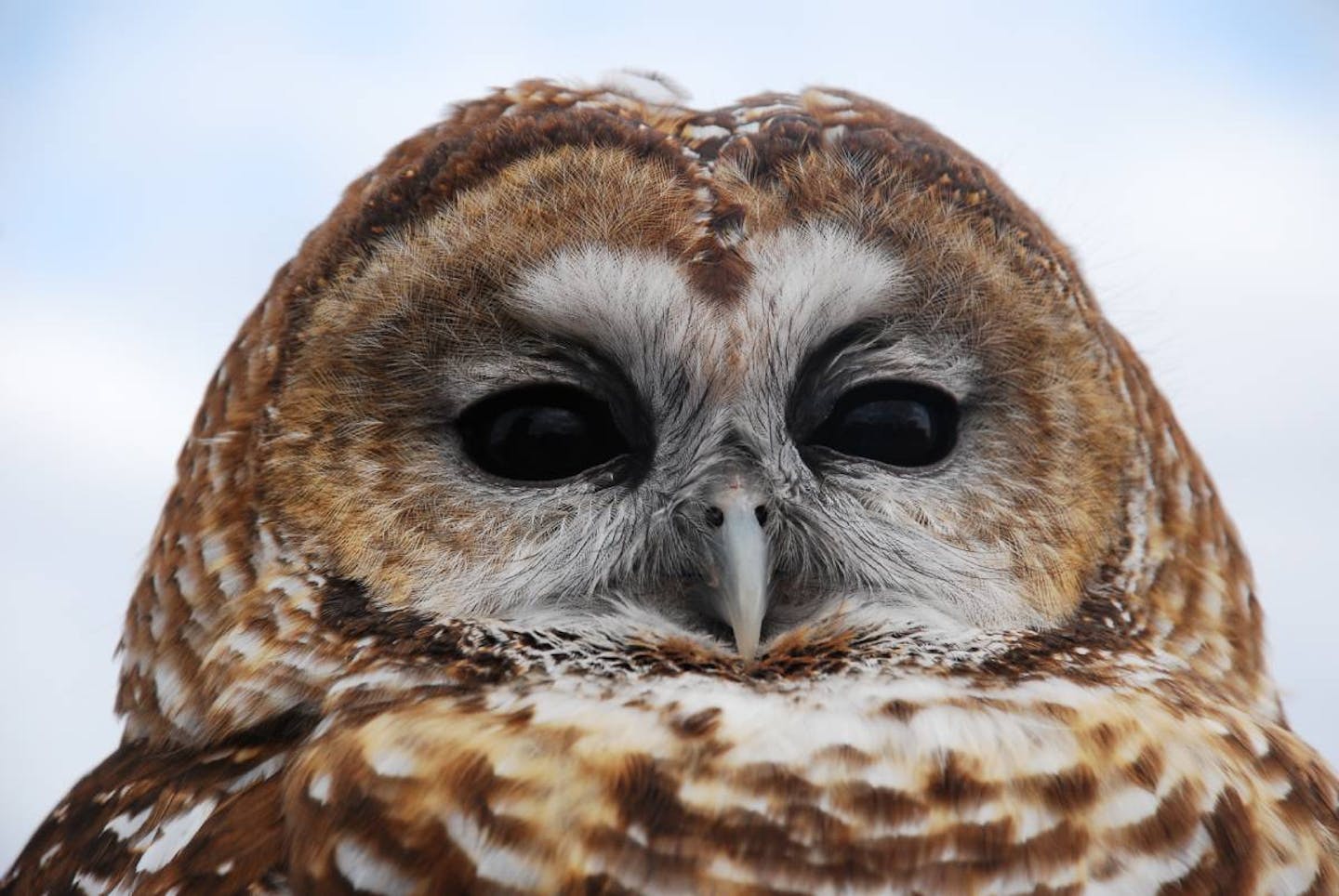Mexican spotted owls: one of the largest in North America
One Earth’s “Species of the Week” series highlights the flagship species of each of the 844 unique ecoregions contained within Earth’s bioregions.
Hidden in the hollows of tree trunks from the southern Rocky Mountains in Colorado, through Arizona, and into Mexico, nest Mexican spotted owls. As sit-and-wait predators, they watch the world from this concealed viewpoint and swoop down when the time is right in the dead of the night. With this act, Mexican spotted owls keep small rodent populations in check and their ecosystem in balance.

Mexican spotted owls are the flagship species of the Arizona Mountains Forests ecoregion, located in the Colorado Plateau & Mountain Forests bioregion (NA19).
One of the largest owls in North America
One of three subspecies of the spotted owl, the Mexican spotted owl (Strix occidentalis lucida), is closely related to the northern spotted owl (Strix occidentalis caurina) and California spotted owl (Strix occidentalis occidentalis). Geographic range and plumage separate the three species.
Both male and female Mexican spotted owls have brown feathers with irregular brown and white spots throughout their plumage with serval white bands across their tail. A yellow beak and talons pop against this coloring, and unlike most owls, Mexican spotted owls have dark eyes.
Only four species of owls are larger in North America. The Mexican spotted owl’s average length is 41-48 centimeters (16-19 inches) with a wingspan of 107-114 centimeters (42-45 inches). They weigh between 547 and 647 grams (19.5-23 ounces), and females are larger and heavier than males.
Homebody hunters
Solitary in nature, Mexican spotted owls tend to stay in the same home range, only traveling a few hundred to 1,500 hectares. Some have been observed migrating over 50 kilometers, but most Mexican spotted owls vertically migrate from high elevations to lower elevations in winter.
Roosting in tree hollows or canyon pits, Mexican spotted owls blend into their environment with their plumage until nightfall. From sunset to sunrise, they forage on primary mice, voles, and woodrats but also consume the occasional bird, bat, or reptile. This diet keeps surplus populations in balance as the owls eat whatever is most available.
.jpg)
Image credit: Courtesy of Apache Sitgreaves National Forest, Flickr
Finding a soulmate
This 'lone wolf' approach lasts until the Mexican spotted owl finds a mate, then forms a monogamous bond that spans their entire life. In Arizona, courtship has been observed to begin in March, with the female laying two to four eggs within the month.
Females solely incubate the eggs for 30 days while the males forage for all or most of the family’s food. The young owlets are dependent on their parents through the summer and eventually take off on their own in the fall.
Saving the species through land conservation
In both the US and Mexico, the Mexican spotted owl is listed as threatened in conservation status. Habitat loss, degradation, and fragmentation due to human and agricultural development, logging, and mining have resulted in a steady population decline.
It is estimated that Mexican spotted owl populations will drop 25–50% over the long term. With this in mind, the US Fish and Wildlife Service designated 8.6 million acres of federal lands in Arizona, Colorado, New Mexico, and Utah as critical habitats for Mexican spotted owls.
While humans may not be able to see Mexican spotted owls camouflaged in their nests, the loss of this species would be felt throughout the entire American Southwest. Through land preservation, the Mexican spotted owl can recover and thrive.
Interested in learning more about the species and bioregions of Northern America? Use One Earth's interactive Navigator to explore bioregions around the world.
Launch Bioregion Navigator


